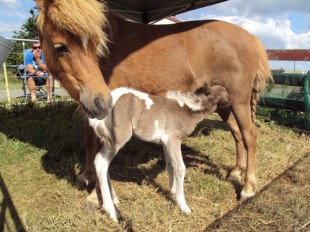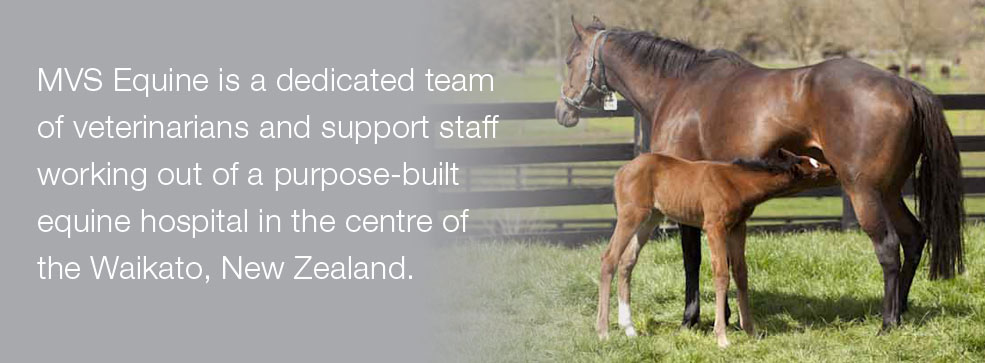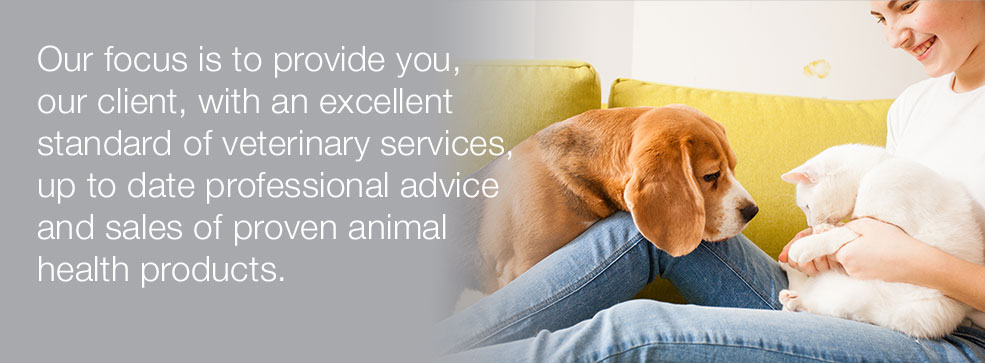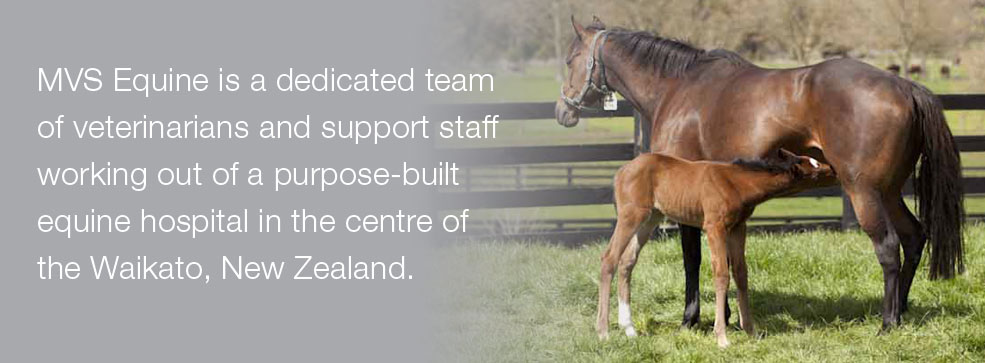Care of the Newborn Foal
Care of the Newborn Foal
June 6, 2012
The birth of a live foal is a relief to all involved however for the foal it is a significant event which requires adaptation to life outside of the uterus/womb. It is vitally important that the people involved with the care of the newborn foal are aware of what is normal and the preventative steps to take in order to pick up on potential problems as soon as possible. These notes cover essential information for the care and monitoring of the newborn foal.
All foals should receive a thorough veterinary examination within 12-24 hours of birth. A blood sample is also taken at this stage to check the amount of immunoglobulin present in the blood.
Veterinary examination should be performed sooner if you have any concerns or if the foal is at higher risk of problems. The foal is considered to be at higher risk if the one or more of the following are present:
- Abnormal gestation length (see table 1)
Table 1: Normal Gestation Lengths
- Abnormal birth (2nd stage labour should last no longer than 20minutes)
- Induced, assisted or interrupted foaling
- Abnormal placenta and/or premature separation of the placenta
- Meconium staining of the foal
- Death of the mare
- Born in a contaminated area
- Cold or wet conditions when born
- Risk factors associated with the mare:
- Concurrent illness
- Recent transport
- Inadequate colostrum/milk production
- Milk production and leakage prior to foaling
- Previous history of problems foaling or problems with the foal.
- Delay in the occurrence of normal events after foaling (see table 2).

Table 2: Expected normal timings of events after birth.
It may help to record the times of the events, abnormalities and findings to ensure accurate information is on hand if problems occur. Contact your Veterinarian if you have any concerns about the appearance or behaviour of the foal (or mare) as soon as they occur.
Mare: The mare should be monitored closely after foaling to ensure there are no signs of colic. She should interact normally with her foal and have colostrum in her udder. Mares can be extremely unpredictable when they have a foal at foot. At least two people should be present to handle the foal and mare and care must be taken at all times.
Umbilicus: Immediately after birth, blood flows from the placenta through the umbilical cord into the foal. The ends of the back legs of the foal may still be partly within the vagina at this stage. Quietly clear the membranes from the nose and mouth of the foal so not to disturb the mare. Unless there is a problem, the mare should then be left quietly resting with her foal after foaling to allow this to happen. The umbilical cord should be allowed to break naturally as the mare stands, or as the foal is pulled around to the mare’s head if there is a delay until she stands.
The umbilicus should be treated immediately after the cord has broken with 0.5% chlorhexidine solution. This should be repeated at least fours times daily until the end is sealed (usually by 3 days of age). The stump of the umbilicus should be clean and dry. Swelling is abnormal and may indicate a hernia, haemorrhage or urine leakage. A patent urachus is a serious condition where urine leaks from the umbilical stump. This is often more noticeable when the foal urinates. Observe the foal closely and Veterinary attention is required immediately if any of these signs are seen or if you have any other concerns.
Placenta: Keep this in clean bucket for the Veterinarian to examine. Do not let other pregnant mares come into contact with it. The placenta should be healthy and uniform on both sides. It should be intact and approximately 10% of the bodyweight of the foal.
Environment: The environment should be as clean as possible. Young foals cannot regulate their body temperature very well. Ensure that they are not exposed to extremes of temperature. The mare and foal should be moved into shelter/shade depending on the weather conditions.
Foal behaviour: After birth the mare should clean the fluid and membranes off the foal. Quickly clear the nose and mouth of membranes then allow the mare to finish. Clean soft towels can be used to assist the mare to dry the foal. Initially the foal may gasp but this should rapidly become an established breathing pattern (see table 3). Immediate intervention is required if the foal fails to breath. Contact your Vet immediately.
The foal gradually moves into sternal recumbency and will then attempt to stand (see table 2 for the times that these events should occur by).
Observe the foal at a distance. Normal foals nurse well 5-7 times an hour. In between feeding it should be bright and responsive, exploring the environment, interacting with the mare and it should lie down to sleep. Foals usually hide behind the mare when people enter the stable/paddock.
Handling: When handling foals it is essential to ensure the environment is safe and clean. Remember that excessive restraint can impair breathing and cause injury. Handlers should wear clean clothes and ideally gloves when handling foals. Foals should not be picked up by putting pressure on the sternum or abdomen.
Physical examination: The normal parameters change according to the age of the foal. Table 3 shows the expected normal values for the newborn foal.
The respiratory rate is best observed at a distance when the foal is undisturbed. The foal should be calm and relaxed to allow accurate measurement of the heart rate. Rectal temperature can be carefully taken with a digital thermometer against the wall of the rectum. KY lubricant should be used to aid insertion of the thermometer. Ask your Veterinarian to demonstrate the correct technique if you have any concerns. The mucous membranes of the mouth should be pale pink in colour and moist.

Table 3: Normal parameters for a newborn foal
Eyes: Check both eyes for entropian regularly. The eyelid(s) rolls in and causes damage to the surface of the eye. Veterinary attention is required to correct the defect, treat any associated damage and to assess the foal. Dehydration and systemic illness may result in entropian.
Musculoskeletal system (especially legs and ribs): The rib cage of the foal is at risk of trauma during birth and rib fractures are not uncommon. Check the chest wall by gently running your hands along the sides. Any deviations, swellings, indentations should be noted and Veterinary attention should be obtained to ensure that there is no risk of further damage to the foal.
The limbs of new born foals may appear weak and slightly uncoordinated but they should strengthen quickly in normal foals. Limb deformities may occur. Flexural limb deformities are where the joints are too flexed, or too lax. Angular limb deformities are where there is deviation to the inside or outside of the limb when viewing from the front of the horse. These may prevent the foal from normal movement and feeding behaviour. Trauma to the limbs can also occur. Prompt veterinary attention is required to ensure these are correctly managed.
Cleft Palate: Gently open the mouth of the foal and check that the hard palate is intact by running clean (preferably gloved) fingers down the centre. This is checked at the Veterinary examination. Observe the foal feeding undisturbed and ensure that it can swallow normally. The appearance of milky fluid at the nostrils is abnormal and Veterinary attention should be obtained immediately.
Tetanus anti-toxin: This should be administered to all new born foals by injection under the skin. This is essential to provide cover against tetanus whilst the foal has an open umbilical stump and a juvenile immune system. Contact your Vet to discuss this further.
Colostrum (“First milk”): Colostrum contains essential nutrients and vital immunoglobulins which protect the foal from infections until it is old enough to develop a functioning immune system. Good quality colostrum should be thick, yellow and sticky. Colostral quality can be tested (please refer to the MVS Equine information sheet on colostral testing).
Foals absorb immunoglobulins from the colostrum through the lining of their gut only until about 18 hours of age. It is essential that the foal feeds regularly during this time to ensure enough immunoglobulin is absorbed. Ensure that the foal nurses and swallows properly. A healthy foal nurses regularly and empties the mare’s udder.
Colostrum is only produced for a short period of time and so will be lost if the mare runs milk prior to foaling which puts the foal at risk of infections. If you are concerned about the colostral quality and/or quantity present or the feeding pattern of the foal a Veterinarian should be contacted. The Vet may be able to administer donor colostrum from a heathly mare with large amounts of high quality colostrum to top up the levels absorbed if the foal is presented before 18 hours of age. Additional steps, such as blood samples, prophylactic antibiotics and/or intravenous plasma administration may also be appropriate.
A blood sample taken around 18-24 hours of age will identify those foals that do not have sufficient levels of immunoglobulin from the colostrum. Appropriate veterinary treatment can then be performed including administration of hyperimmune plasma by an intravenous infusion.
Meconium: This is the dark brown/black faecal-like substance which is normally present in the small colon of the rectum at birth. It can be paste to pellet-like in consistency. Meconium should be passed within a few hours of birth otherwise problems will occur. Excessive or unproductive straining and colic signs are abnormal. Make a note of the colour, consistency and amount that is passed and the time that this occurs.
Meconium staining present on the coat at birth is a sign of stress that occurred in the uterus or during birth and is a warning sign for other serious problems including pneumonia. If you suspect this has occurred, Veterinary evaluation should be performed as soon as possible.
Urination: A normal 50kg foal produces 7.5 litres of urine a day (312ml an hour) for the first two days of life. This means you should see your foal urinate good streams frequently- most foals urinate each time they rise to feed after resting.
Straining whilst urinating, reduced frequency of urination, reduced volume of urine, a distended abdomen and colic are all abnormal signs and may be due to inadequate milk intake or a problem with the urinary tract. A veterinary examination is required as soon as you have any concerns as the underlying cause may be life threatening.
References:
McAuliffe, S. B., Slovis, N. M (2008) Color Atlas of Diseases and Disorders of the Foal. Saunders Elsevier, London
Notes from: Rossdale & Partners Foal Care Course (2010) Edited by Stoneham, S. J. Whorl Publishing Limited, Newmarket, UK.






